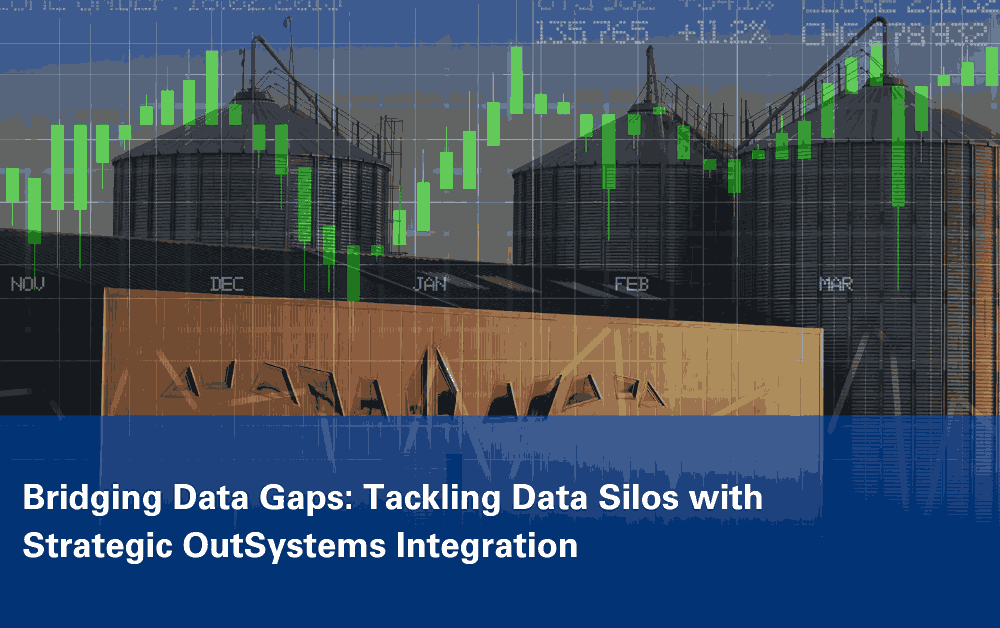Technology plays a crucial role in boosting efficiency, fostering innovation, and fueling growth. However, it’s important to acknowledge that the systems designed to make operations smoother can sometimes end up creating unexpected obstacles to achieving success.
One such challenge is the risk of isolated solutions or data silos, which can hinder collaboration, decision-making, and overall organizational performance. In this comprehensive guide, we’ll delve into the intricacies of this issue, explore its impacts, and offer insights into how businesses can mitigate these risks with the help of OutSystems.
What They Are and Why They’re Problematic:
Data silos are like separate islands where information is trapped and inaccessible to others. Imagine a library where each book is stored in its own locked box, and only the librarian with the key knows what’s inside. Similarly, in organizations, data silos occur when different departments or systems hoard their data, making it difficult for others to access or utilize it.
This isolation of data creates numerous problems. Firstly, it hinders collaboration and decision-making because relevant information is not shared across the organization. Secondly, it leads to inconsistencies and errors in analysis, as different departments may use conflicting data sets. Thirdly, it impedes innovation and efficiency, as redundant efforts are made to collect or duplicate data that already exists elsewhere. Overall, data silos limit an organization’s ability to harness the full potential of its data, resulting in inefficiencies and missed opportunities for growth and improvement.
The Risks and Impacts:
The consequences of isolated solutions and data silos can be significant and far-reaching:
Reduced Efficiency: Siloed data requires manual effort to access and analyze, leading to inefficiencies and increased operational costs.
- Poor Decision Making: Without a unified view of data, decision-makers may lack critical insights, leading to suboptimal choices and missed opportunities.
- Inhibited Innovation: Silos can stifle innovation by limiting access to valuable information and hindering collaboration between teams.
- Data Inaccuracy and Redundancy: Inconsistent data across siloed systems can result in errors, duplication, and discrepancies.
- Security Vulnerabilities: Silos may pose security risks, making it challenging to enforce consistent security measures and protocols.
Mitigating the Risks with OutSystems
Fortunately, businesses can take proactive steps to address these challenges with the help of OutSystems:
Embrace Integration: OutSystems offers robust integration solutions that facilitate seamless communication and data exchange between systems, breaking down silos and promoting interoperability.
Implement Data Governance: With OutSystems, businesses can establish clear policies and procedures for data management to ensure consistency, accuracy, and security across the organization.
Promote Collaboration: OutSystems promotes cross-functional collaboration and communication, empowering teams to work together efficiently and innovate seamlessly.
Modernize Infrastructure: OutSystems enables businesses to assess and update legacy systems, ensuring they can support interoperability and integration with modern technologies.
Educate and Train: OutSystems provides training and resources to employees, enhancing their understanding of data management best practices and the importance of integration in driving organizational success.
Continuous Improvement is Key:
Isolated solutions and data silos pose significant risks to organizations, undermining efficiency, innovation, and competitiveness. By leveraging OutSystems’ powerful solutions and following the strategies outlined above, businesses can unlock the full potential of their technology investments and drive sustainable growth in today’s digital economy. It’s time to break down the barriers and embrace a more connected, collaborative approach to technology and data management with OutSystems.
Exploring Data Fabric:
Addressing data silos is an ongoing process that requires continuous evaluation, optimization, and improvement. By regularly assessing the effectiveness of integration efforts, data governance practices, and collaboration initiatives, organizations can adapt to evolving challenges and opportunities in the digital landscape.
To delve deeper into the concept of data integration and management, consider exploring the topic of data fabric. Data fabric provides a unified architecture for integrating, managing, and analyzing data across disparate sources and environments.
For more information on how data fabric can help your organization overcome data silos and drive innovation, Download our strategic guide, “Mastering Data Fabric: A Strategic Guide for IT Leaders on the OutSystems Platform,” and embark on a journey toward data mastery.









